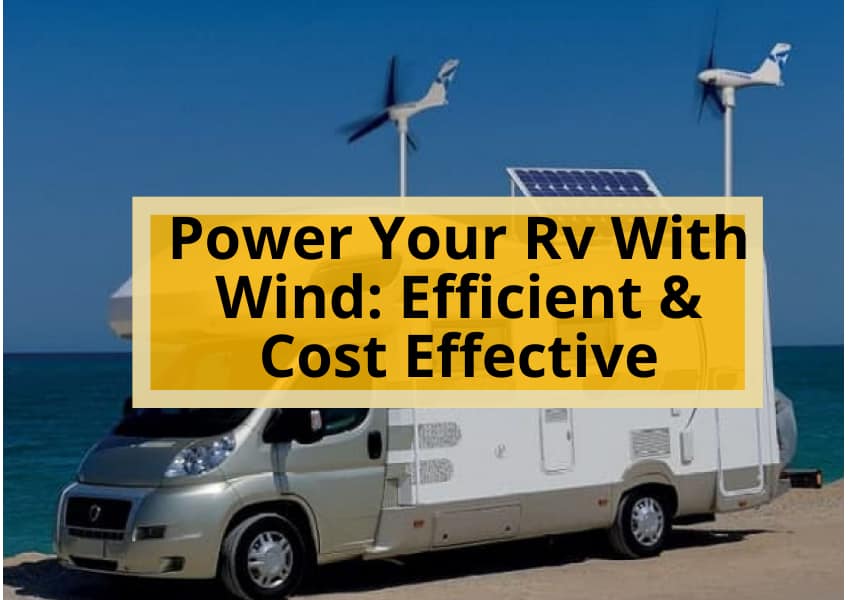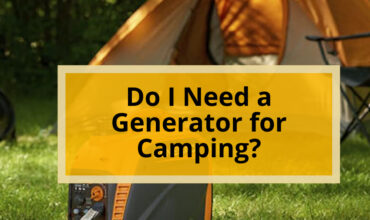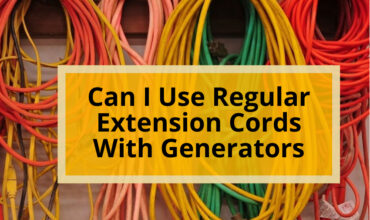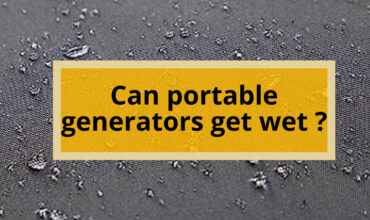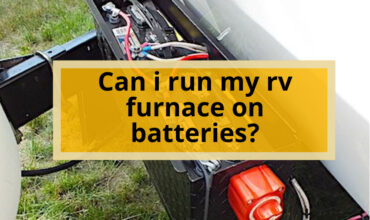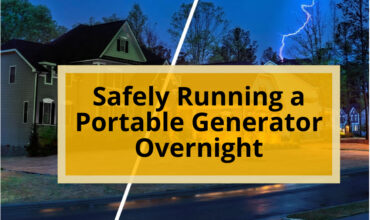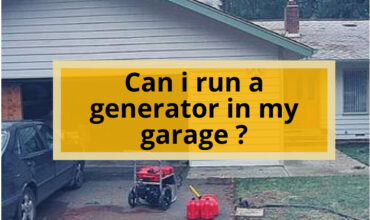The rising popularity of RV travel has led to an increased demand for reliable and cost-effective power sources that can keep appliances running while on the road. Wind turbines have emerged as a viable solution for powering an RV, as they can efficiently convert wind power into electricity. Compared to traditional grid-based energy sources, wind turbines are relatively small, low-cost to install, and can provide a backup power supply in case of outages or emergencies.
In this article, we will explore the benefits of using wind turbines to power your RV. We will provide an overview of the different types of wind turbines available for RVs, the process of mounting them, and tips for setting up an efficient and cost-effective wind power system.
Whether you’re a seasoned RV traveler or just starting out, this article will provide you with the information you need to harness the power of wind and keep your RV running smoothly while on the road.
Mounting Wind Turbines
The installation of wind turbines on an RV for power generation requires careful consideration of various factors. One crucial factor is the required power output, which determines the size and wattage rating of the wind turbine.
Another factor to consider is the shape of the wind turbine, as RV wind generators are available in three main shapes: traditional horizontal axis fan shape, spherical shape, and spiral shape.
Additionally, it is essential to have the necessary components, such as a wind turbine charge controller, RV inverter, battery pack, and wiring, to set up a wind power system.
The benefits of RV wind turbines include their relatively small size and low cost, making them a feasible option for power generation on an RV.
The best locations for mounting RV wind turbines are typically on the roof or the rear of the vehicle, as these areas typically experience the most significant wind speeds.
However, it is crucial to ensure that the wind turbine’s installation does not interfere with any other components of the RV, such as the air conditioning unit or satellite dish.
By carefully selecting the wind turbine’s size and shape and properly mounting it in an optimal location, RV owners can harness the power of the wind to supply their appliances while on the road.
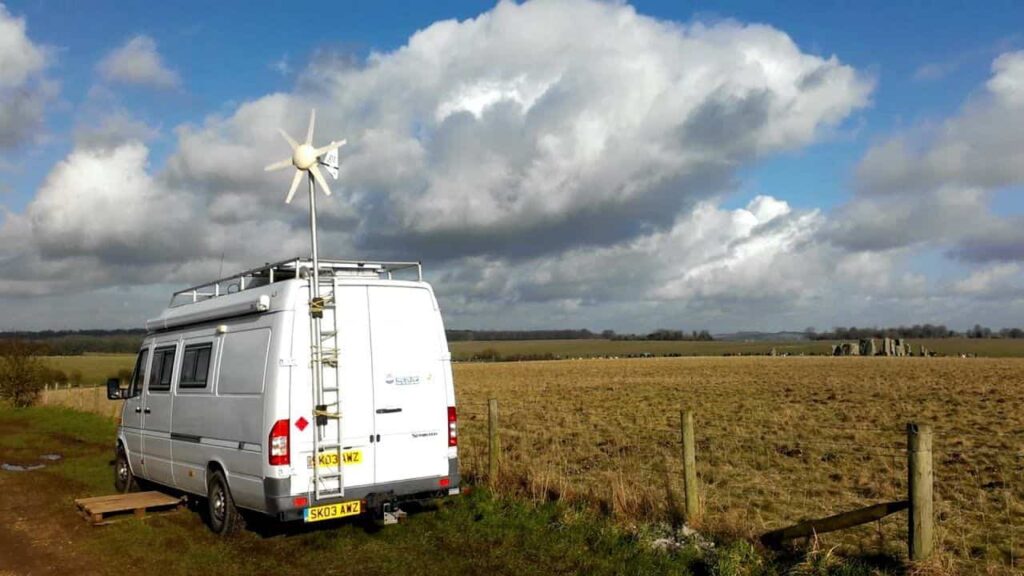
Types of RV Wind Turbines
Three main shapes of wind turbines are available for installation on recreational vehicles: the traditional horizontal axis fan shape, spherical shape, and spiral shape.
Spherical wind turbines have a unique design that allows them to capture wind from any direction, making them ideal for RVs that are constantly on the move. They are also quieter and more efficient than traditional turbines, making them a popular choice for RV owners who value peace and quiet.
When it comes to powering an RV with wind, a hybrid wind solar system is the ideal choice. By combining the power of wind turbines and solar panels, RV owners can create a reliable and efficient power system that can keep their appliances running no matter where they go.
This system also ensures that power is available even when the weather conditions are not optimal for wind or solar power generation. With a hybrid wind solar system, RV owners can enjoy the freedom of the open road without sacrificing the comforts of home.
also read : Protect Your Generator: Winterize Now
Setting Up a Wind Power System
To establish a functioning wind power system for an RV, several components such as a wind turbine charge controller, RV inverter, battery pack, and wiring must be installed and configured in a specific manner. Choosing the right wind turbine is crucial as it affects the amount of power generated. The size and power output required will determine the type of wind turbine to be installed. Horizontal axis wind turbines are the most common type and are suitable for RVs. They work by converting wind energy into rotational energy, which is then converted into electricity. Spherical and spiral-shaped turbines are also available but are less common in RV applications.
Wiring and installation considerations should also be taken into account when setting up a wind power system. The electrical system must be wired correctly to ensure the proper functioning of the components. The battery pack should be sized appropriately to store the electricity generated by the wind turbine. In addition, the wind turbine charge controller and RV inverter must be installed correctly to ensure the efficient conversion and delivery of the electricity. The table below summarizes the key components and considerations for setting up a wind power system for an RV.
| Component | Description |
|---|---|
| Wind Turbine | Converts wind energy into electrical energy |
| Charge Controller | Regulates the amount of electricity sent to the battery pack |
| Battery Pack | Stores the electricity generated by the wind turbine |
| Inverter | Converts DC electricity stored in the battery pack to AC electricity |
| Wiring | Connects the components and delivers electricity throughout the RV |
Overall, setting up a wind power system for an RV requires careful consideration of the components and installation. Choosing the right wind turbine and ensuring proper wiring and installation will result in a cost-effective and efficient power source for an RV.
Frequently Asked Questions
What is the average cost of installing a wind power system on an RV?
The average cost of installing a wind power system on an RV depends on various factors such as the power output required and the type of wind turbine chosen. However, considering the wind power benefits and installation process for RVs, wind turbines are relatively low-cost compared to traditional RV power sources. Comparing wind power to traditional RV power sources, wind turbines offer a more cost-effective and efficient solution for powering an RV.
How much maintenance is required for an RV wind turbine?
The lifespan of an RV wind turbine is between 15 and 20 years. Maintenance frequency varies by turbine type, but regular checks of the blades, wiring, and charge controller are necessary to ensure optimal performance and safety.
Can an RV wind turbine be used while driving or only when parked?
The efficiency of an RV wind turbine may be affected when driving due to the varying wind speeds encountered. Wind turbine power output while driving may be lower compared to when parked and exposed to consistent wind speeds. Further research is required to determine the exact impact on power output.
Is it possible to sell excess power generated by an RV wind turbine back to the grid?
It is not possible to sell excess power generated by an RV wind turbine back to the grid without a grid connection. However, a hybrid wind-solar system can be installed to supply power for the RV, and excess energy can be stored in batteries for later use.
What are some common safety considerations when installing and using an RV wind turbine?
Wind turbine installation on an RV requires strict adherence to safety precautions, including ensuring that the turbine is properly secured and grounded, avoiding overloading electrical systems, and regularly inspecting and maintaining the turbine to prevent accidents and damage to the RV.
